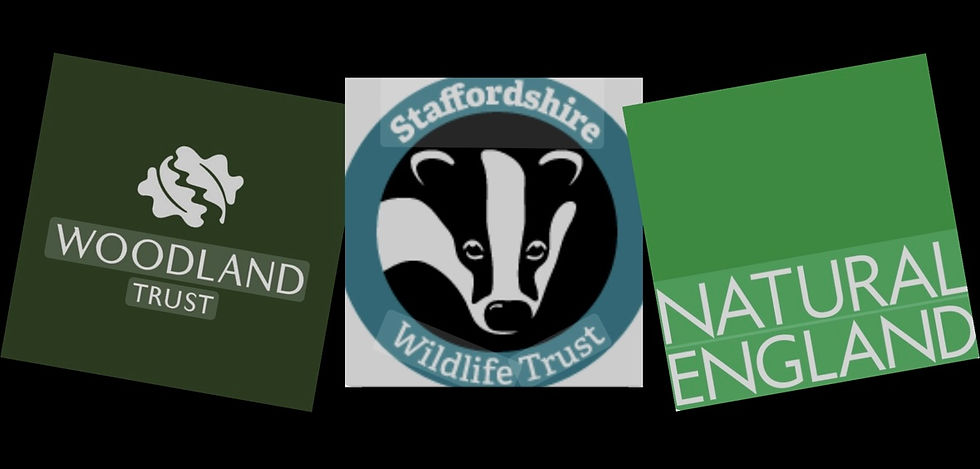
Nick Hopwood
1 Aug 2025
Collaborations with the Woodland Trust, Staffordshire Wildlife Trust, and Natural England
During 2024 - 2025, Wetley Moor Tree Nursery has liaised with the Woodland Trust to discuss its "MOREWOODS" scheme, which is designed to encourage the creation more woodland areas in England, Wales, and Northern Ireland. Wetley Moor Tree Nursery intends to use part of its site to introduce native trees and hedgerows, creating a wildlife corrider on Wetley Moor Common.
The site is located within a pocket of land surronded by Wetley Moor SSSI (Site of Special Scientific Interest), which is designated for its lowland heath habitat.
In collaboration with the Woodland Trust, Staffordshire Wildlife Trust, and Natural England the project aims to enhance habitat restoration by providing a 40% canopy cover to link woodland areas on Wetley Moor common. This is expected to create valuable habitat niches for wildlife - including invertebrates, birds, mammals, reptiles, and amphibians - while supporting the movement of species between two parts of the SSSI. The introduction of dense hedgerows around the entire perimeter of the site, using species such as hawthorn, blackthorn, and occasional rowan, will further provide nesting opportunities and food sources.
The process will encourage rewilding - essentially giving nature the keys back to the land - but the benefits extend beyond the fence line and include:
Restoring biodiversity
- More species, more balance. By letting natural habitats recover, you create space for native plants, insects, birds, and mammals to thrive.
- Stronger food webs. Bringing back missing species (like beavers, wolves, or large grazers) helps restore natural predator - prey and plant - herbivore balances.
- Habitat complexity. Dead wood, wetlands, scrub, and varied vegetation layers offer homes for countless species
Boosting Ecosystem Services (nature doing helpful work for free)
- Flood control. Wetlands and healthy soils slow water runoff and absorb heavy rains
- Clean water. Natural filtration through vegetation and soils reduces pollution.
- Pollination. Flower-rich areas boost wild pollinators, supporting farmland.
Climate Regulation
- Carbon capture. Woodlands, peatlands, and wetlands store large amounts of carbon in plants and soil.
- Cooling effect. Tree cover and vegetation reduce local temperatures, countering urban heat and climate extremes.
- Resiliience. Diverse ecosystems bounce back faster from drought, storms, and pests.
Soil Health
- Nutrient Cycling. Plants and soil life (fungi, bacteria, eathworms) build fertile soil naturally.
- Erosion prevention. Root systems lock soil in place, reducing sediment runoff.
- Soil carbon storage. Healthy soils can hold more organic matter and moisture.
Landscape Connectivity
- Wildlife corriders. Linking Habitats helps species move, migrate, and adapt to climate change.
- Genetic diversity. Larger, connected populations are healthier and less vulnerable to disease.
Cultural and Human Benefits
- Recreation and wellbeing. Wild spaces offer peace, beauty, and mental health benefits
- Education and research. Living examples of natural systems for schools, scientists, and communities.
- Economic opportunities. Eco-tourism, nature-based jobs, and regenerative land uses.